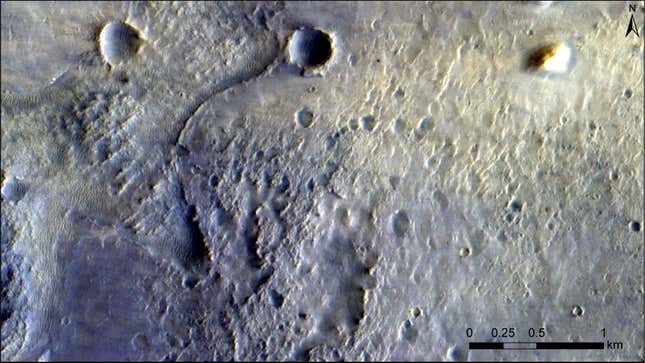
The Perseverance rover, along with several components used during the recent landing, have been imaged from space.
The image, captured by the ExoMars Trace Gas Orbiter, reveals the location of the parachute and back shell, the descent stage, the heat shield, and of course, the Perseverance rover itself. The spacecraft’s Colour and Stereo Surface Imaging System was used to acquire the photo. Launched in 2016, TGO is a joint mission of the European Space Agency and Russia’s Roscosmos.

Perseverance landed in Jezero crater on February 18, an event that NASA managed to capture on film. “Jezero” means “lake” in several Slavic languages, which is precisely what this place used to be billions of years ago. Once the rover gets moving, its primary task will be to search for traces of ancient microbial life within this former body of water.
The descent stage is located around 2,130 feet (650 meters) from the rover. This is the rocket-powered piece of equipment that used cables to lower the rover onto the surface and then zipped away to crash at a safe distance. The parachute and backshell are approximately 3,950 feet (1,200 meters) to the northwest of the rover, while the heat shield is around 4,750 feet (1,450 meters) to the northeast.
Trace Gas Orbiter acquired this image five days after the landing. These discarded objects will become harder to see over time, as they’ll get increasingly covered by Martian dust in the coming years and decades.
In addition to this image, the orbiter assisted during the descent and landing, acting as a data relay station for NASA. The satellite’s primary mission is to search for atmospheric gases linked to geological—and possible biological—processes on Mars. Trace Gas Orbiter recently made headlines by discovering a previously undetected chemical process on Mars, albeit a process not associated with life.